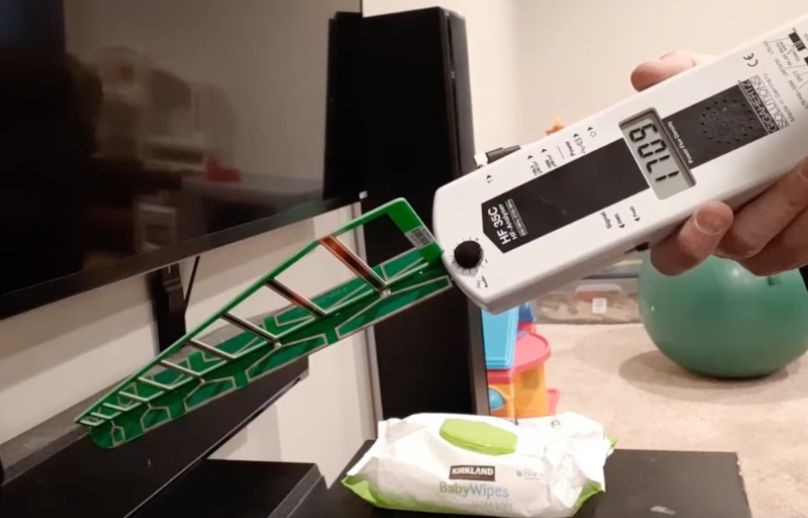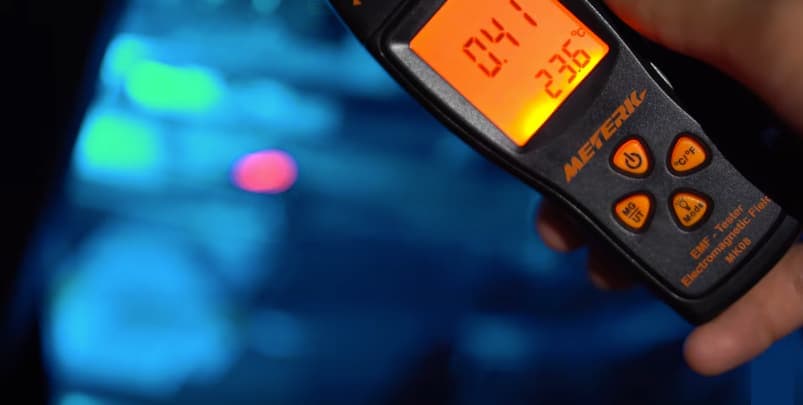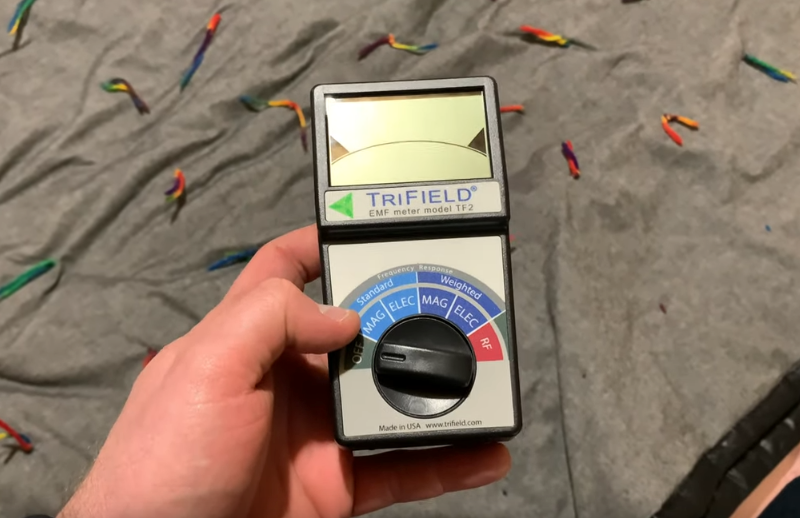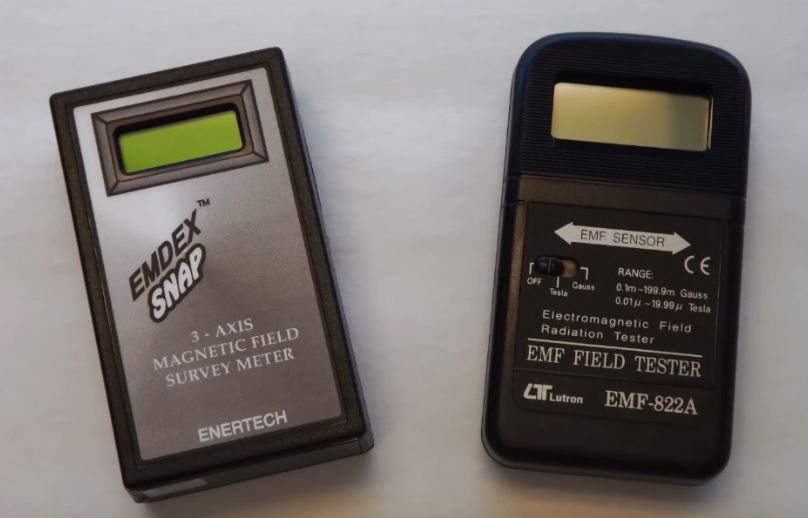When I first started my journey into EMF protection, I knew I needed reliable equipment to test radiation levels in my own home. After several disappointing experiences with cheaper meters and even buying the wrong type of meter, oops.
I finally invested in the HF35C high frequency meter, and it completely changed how I understand electromagnetic radiation in our everyday environments.
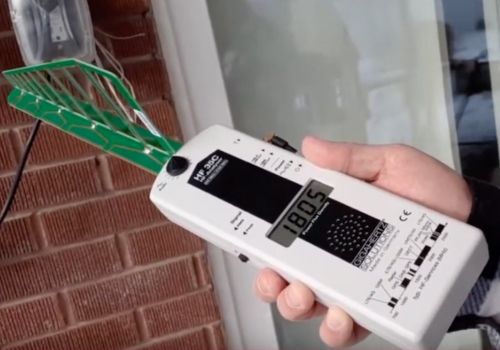
Technical Specifications at a Glance
- Frequency Range: 800MHz – 2.7GHz
- Measurement Units: μW/m² (microwatts per square meter)
- Battery Life: 6-7 hours per 9V battery
- Key Feature: LogPer directional antenna for precise source detection
- Display: Digital readout with audio analysis capability
- Measurement Modes: Peak and RMS readings
Where to Buy & Pricing
- Available from Amazon ($318.95 with free shipping)
- Available from Safe Living Technologies ($318.00 USD)
- Includes 2-year manufacturer warranty”
Why I Finally Chose the HF35C
Let me be honest – the price tag made me hesitate at first. But after testing dozens of EMF meters for my website and personal use, I can tell you this: sometimes you really do get what you pay for. Here’s what makes this meter stand out:
- Incredibly simple to use with just 3 buttons (perfect for my friends and family when I show them how to test their homes)
- Crystal clear readings on the display
- The external antenna is great for finding radiation sources
- Proven accuracy that cheaper meters just can’t match
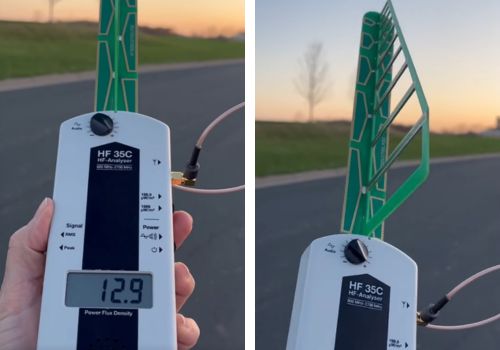
What You Can Actually Test With This Meter
Through testing my house and helping friends and family, I’ve used the HF35C to measure radiation from:
- Cell phones and towers
- WiFi routers
- Smart meters
- DECT cordless phones
- Digital baby monitors (my sister was particularly concerned about this one)
- Gaming consoles (my nephew’s room was a hotspot!)
- Bluetooth devices
- Wireless security systems
- Microwave ovens
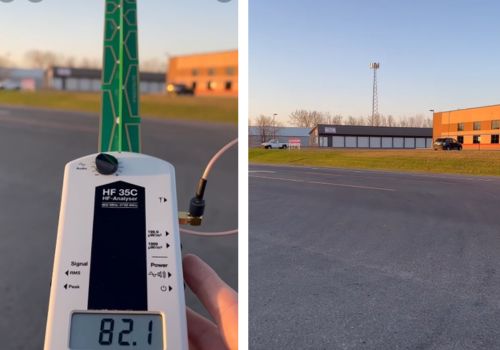
Important Note: What The HF35C Won’t Measure
Let me clear something up that confused me when I first started EMF testing – the HF35C is specifically a Radio Frequency (RF) meter. While it’s excellent at measuring wireless radiation, it won’t detect three other important types of EMF:
- Magnetic Fields from power lines, electric panels, and appliance motors
- Electric Fields from home wiring, cords, and electrical devices
- Dirty Electricity from LED bulbs, solar inverters, and smart meters
If you’re looking for a more all-in-one solution, I also use the TriField TF2 meter, which can measure RF, magnetic, and electric fields. While it’s great as a general-purpose meter, I still prefer the HF35C for detailed RF measurements due to its superior accuracy and directional antenna.
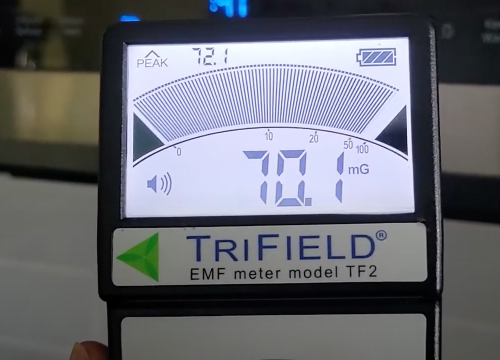
Think of the HF35C as your precision tool for wireless radiation, and the TriField TF2 as your versatile backup that covers all the basics. For dirty electricity specifically, you’ll still need a separate microsurge meter.
My First Eye-Opening Tests
Let me share something that shocked me during my first home testing. I started in my bedroom, where like many people, I used to keep my cell phone on the nightstand.
The readings were eye-opening – I couldn’t believe how much radiation I’d been exposing myself to while sleeping! Needless to say, my phone now stays in airplane mode at night or in another room.
But the biggest surprise came when testing my WiFi router. The meter started making this distinct pulsating noise (kind of like those emergency broadcast interruptions on radio), and the readings went completely off the charts – maxing out above 1999 µW/m². I knew WiFi emitted radiation, but seeing these numbers in my own home was a wake-up call.
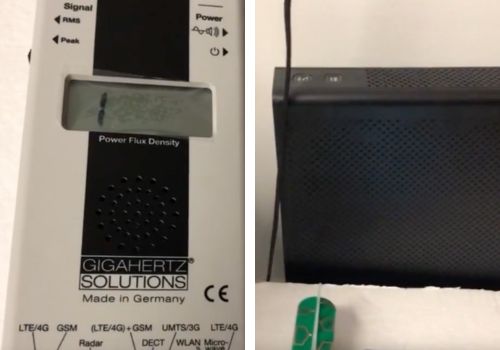
My Favorite Features and How to Use Them
The directional capability of this meter is invaluable. Unlike those pocket detectors that just give you a general reading, the LogPer antenna helps you pinpoint exactly where radiation is coming from. Here’s how I use it:
- Set the audio volume to a comfortable level
- Use the fine grain setting (top position) for low radiation areas
- Switch to the higher range (bottom position) for stronger sources
- Choose between peak and RMS readings (I usually stick with peak for home testing)
Important Tips I’ve Learned
Through trial and error, I’ve picked up some crucial tips:
- Always turn off your cell phone during testing – it will mess up your readings
- Carry spare 9V batteries – you get about 6-7 hours per battery
- Consider getting a 20dB attenuator for measuring very strong sources (can measure up to 199, 999 uW per sq. meter)
- Take measurements from multiple angles – radiation doesn’t just come from one direction
The Downsides (Yes, There Are Some)
In the spirit of complete honesty, here are the limitations I’ve found:
- The antenna makes it pretty bulky – not something you can slip in your pocket
- It’s quite noticeable when testing in public spaces
- The frequency range misses some newer WiFi bands
- Doesn’t measure dirty electricity or magnetic fields from power lines
- You need multiple measurements to get a complete picture of radiation from all directions
Real Solutions I’ve Found Through Testing
After discovering how high my WiFi router readings were, I implemented solutions in stages – each verified with the HF35C meter:
- First, I tried a router guard from Amazon – basically a metal shield that the router sits inside. When I measured again, the radiation levels had dropped by nearly half!
- Later, I upgraded to a JRS Eco Router, which is a game-changer. This low-EMF router reduces beacon pulse frequency by 90% and includes an intelligent auto-switching feature – it goes into 100% radiation-free mode when not in use and automatically reactivates when you enable WiFi on your device.
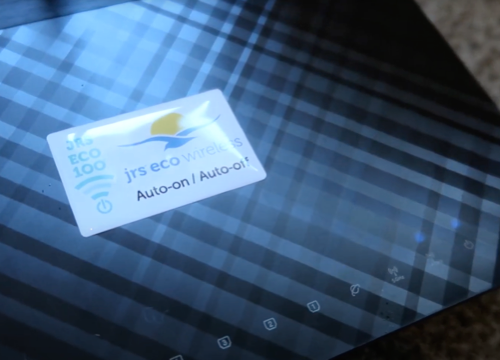
These are exactly the kind of practical solutions you can only implement and verify when you have accurate measurements. Plus, being able to measure the before and after difference really shows you what’s working.
Here is a measurement from WIFI radiation. Again the meter goes into overload, indicating a very high level of emissions.
Real-World Impact
Since starting my EMF protection website and testing various homes, I’ve seen firsthand how valuable accurate measurements can be. My neighbor was skeptical about EMF protection until I showed him the readings from his baby monitor. Now he’s completely rearranged his nursery setup for lower exposure.
The audio analysis feature has been particularly helpful when showing friends and family what different types of radiation sound like. It’s amazing how quickly people grasp the concept when they can actually hear the difference between WiFi and cell phone signals!
Is It Worth the Investment?
If you’re serious about understanding and reducing EMF exposure in your home, absolutely. While there are cheaper options available, the HF35C offers a level of accuracy and usability that makes it worth the investment.
Remember, measuring EMF is just the first step. The real value comes from using this information to create healthier living spaces. I’ve helped numerous friends and family members reduce their exposure simply by being able to show them accurate readings and identify problem areas in their homes.
If you’re ready to invest in an HF35C, you can find it on Amazon ($318.95 with free shipping) or directly from Safe Living Technologies ($318.00 USD). Both options include a 2-year manufacturer warranty.

